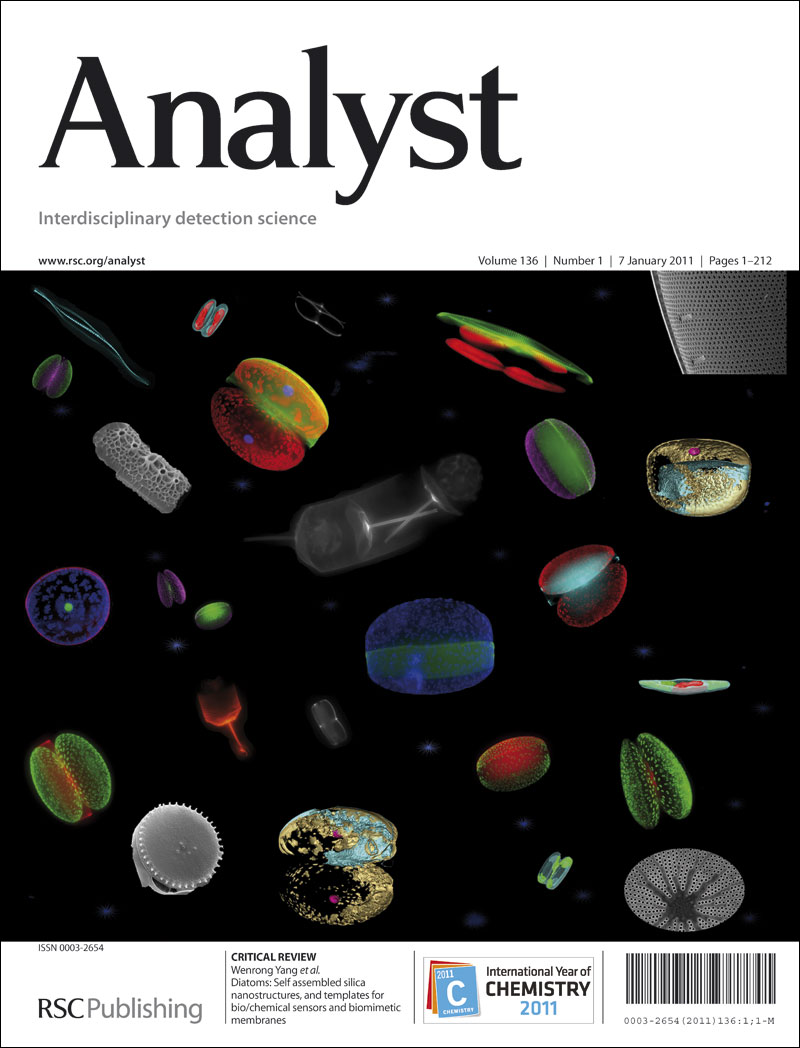Enhancing fouling resistance of graphite sheets for electrochemical sensing of bisphenol-A
IF 3.6
3区 化学
Q2 CHEMISTRY, ANALYTICAL
引用次数: 0
Abstract
Bisphenol A (BPA) is widely used in the production of polycarbonate plastics and epoxy resins, and it is now classified as an emerging pollutant due to its extensive environmental presence. Given the need for effective BPA monitoring, this study presents a cost-effective electrochemical approach for its quantification, using pyrolytic graphite sheets (GSs) as working electrodes integrated into a 3D-printed electrochemical cell. Despite initially exhibiting an intense voltammetric peak for BPA, fouling of the GS surface resulted in a progressive decrease in the BPA signal over successive scans. A pretreatment consisting of applying +1.5 V for 30 s under continuous stirring was adopted before voltammetric measurements. This pretreatment promotes the oxygen evolution reaction, likely cleaning the electrode surface and enhancing its antifouling capability by introducing oxygenated functional groups onto the GS surface. In contrast, this pretreatment was ineffective for a glassy carbon electrode (GCE), likely due to its morphology and reduced reactive surface area, which inhibited the formation of oxygenated functional groups. Under optimized conditions, differential pulse voltammetry with the treated GS electrode yielded a linear range for BPA detection from 0.5 to 1.9 μmol L−1, achieving a detection limit of 0.12 μmol L−1. The proposed electrochemical method was applied to quantify BPA in drinking water and vacuum-pressure mouthguard sheets, providing results statistically equivalent to those obtained using high-performance liquid chromatography. Therefore, this paper presents interesting findings that we believe to be significant for the electroanalysis community, particularly in developing countries where research funding is often limited.

提高双酚a电化学传感石墨片的耐污性能
双酚A (BPA)广泛用于生产聚碳酸酯塑料和环氧树脂,由于其广泛存在于环境中,现在被列为新兴污染物。考虑到有效监测BPA的需要,本研究提出了一种具有成本效益的电化学方法来量化BPA,将热解石墨片(GSs)作为工作电极集成到3d打印电化学电池中。尽管最初显示出强烈的BPA伏安峰值,但在连续扫描中,GS表面的污染导致BPA信号逐渐减少。采用+1.5 V连续搅拌30 s的预处理,然后进行伏安测定。这种预处理促进了析氧反应,可能清洁了电极表面,并通过在GS表面引入含氧官能团来增强其防污能力。相比之下,这种预处理对玻碳电极(GCE)无效,可能是由于其形态和减少的反应表面积,从而抑制了氧化官能团的形成。在优化条件下,经处理的GS电极的差分脉冲伏安法对BPA的检测在0.5 ~ 1.9 μmol L−1范围内呈线性,检出限为0.12 μmol L−1。将电化学方法应用于饮用水和真空压力护齿片中的双酚a定量,结果与高效液相色谱法统计结果相当。因此,本文提出了一些有趣的发现,我们认为这些发现对电分析界具有重要意义,特别是在研究资金通常有限的发展中国家。
本文章由计算机程序翻译,如有差异,请以英文原文为准。
求助全文
约1分钟内获得全文
求助全文
来源期刊

Analyst
化学-分析化学
CiteScore
7.80
自引率
4.80%
发文量
636
审稿时长
1.9 months
期刊介绍:
"Analyst" journal is the home of premier fundamental discoveries, inventions and applications in the analytical and bioanalytical sciences.
 求助内容:
求助内容: 应助结果提醒方式:
应助结果提醒方式:


